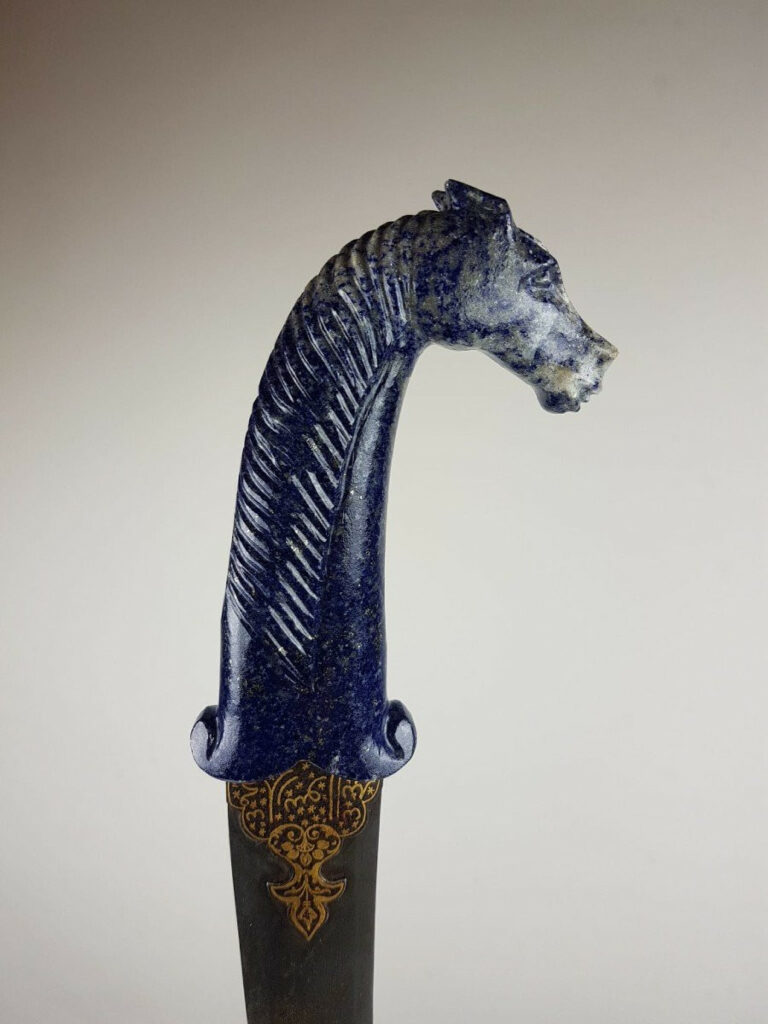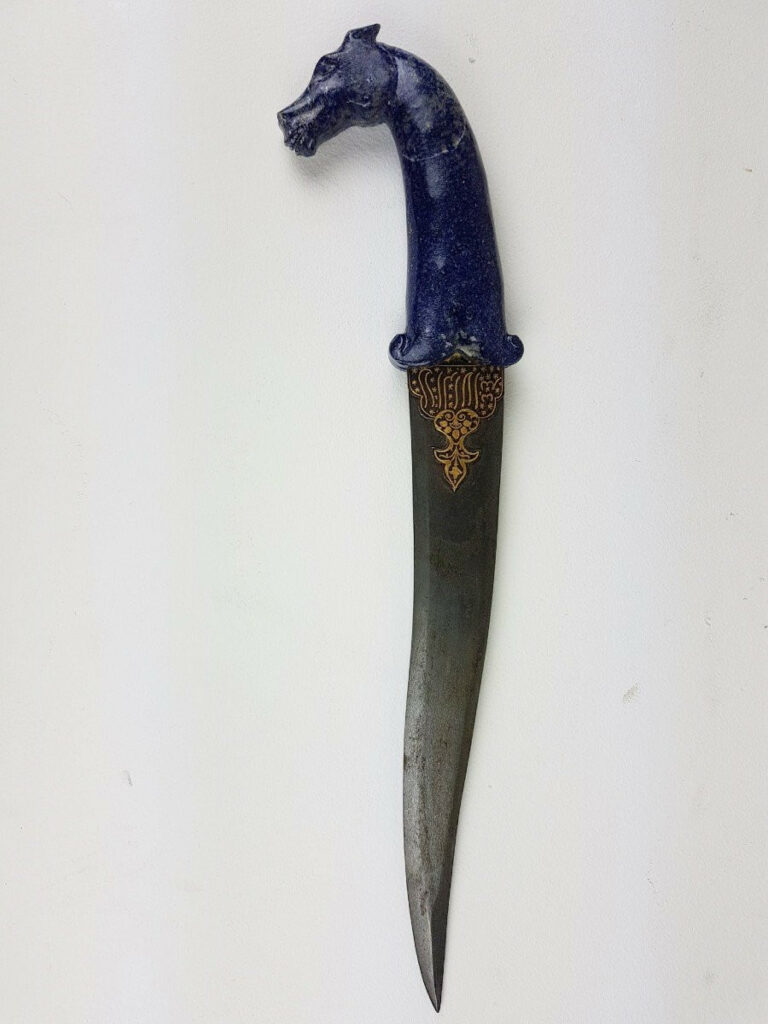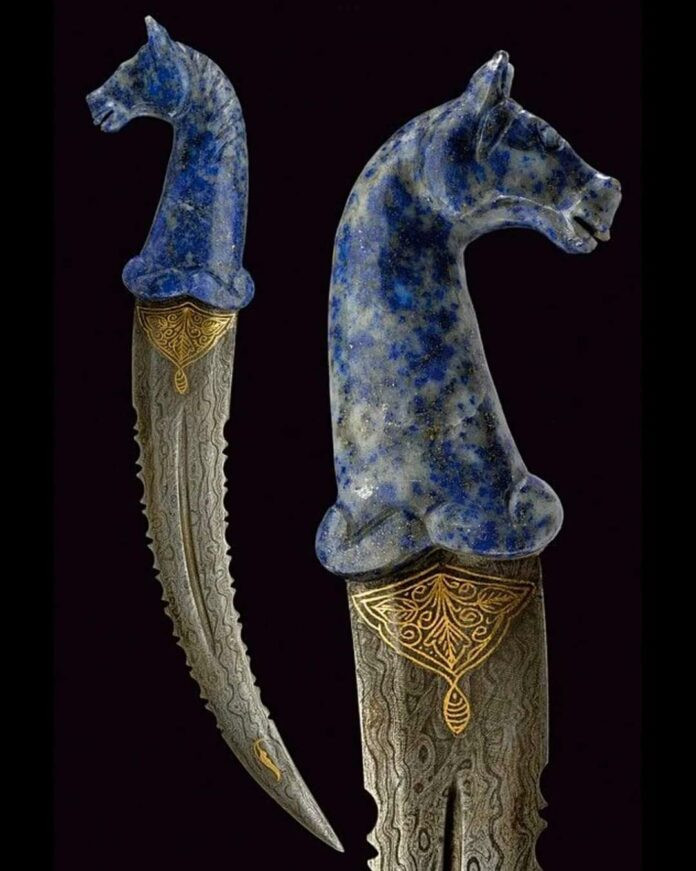The world of ancient weaponry is a fascinating realm, filled with tales of ingenuity, craftsmanship, and cultural significance. Among the many iconic blades that have stood the test of time, the Pesh-kabz stands out as a true masterpiece – a weapon born in the heart of Safavid Persia during the 17th century. This remarkable Indo-Persian knife, with its unique design and exquisite craftsmanship, has not only left an indelible mark on the annals of history but also continues to captivate audiences today.
In this comprehensive blog post, we will delve into the origins, features, and cultural significance of the Pesh-kabz, exploring how this formidable weapon evolved from a tool designed to penetrate mail armor to a symbol of honor and tradition in Afghan tribal culture.
The Pesh-kabz: A Unique Blade Design for Lethal Precision

The defining characteristic of the Pesh-kabz lies in its distinctive blade design. Crafted with meticulous attention to detail, the knife boasts a hollow-ground, single-edged, and recurved blade. This unique construction, characterized by a thick spine and a “T” cross-section, gives the Pesh-kabz its unparalleled ability to effectively penetrate mail armor – a crucial feature that made it a preferred choice among warriors of the time.
The blade of the Pesh-kabz broadens towards the hilt and tapers to a needle-like tip, allowing for both thrusting and slashing techniques. Typically, the knife measures around 40-46 cm in length, with the blade ranging from 28-33 cm. This carefully balanced design not only enhances the weapon’s functionality but also contributes to its overall visual appeal.
Exquisite Craftsmanship and Materials

The Pesh-kabz is renowned not only for its deadly functionality but also for its exquisite craftsmanship. Crafted with a full-tang construction, the knife is built to withstand the rigors of combat, ensuring durability and strength. The handle materials used in the creation of the Pesh-kabz are equally captivating, with walrus ivory being a popular choice among artisans.
However, the versatility of the Pesh-kabz is evident in the diverse range of materials employed in its construction. Artisans have also utilized other precious materials, such as rhino or elephant ivory, wood, and various stones, to create intricate and decorative handles. The sheaths, often crafted from metal or leather over wood, are frequently adorned with silver embellishments or precious stones, adding a touch of opulence to this formidable weapon.
The attention to detail and the use of high-quality materials in the creation of the Pesh-kabz are a testament to the skill and artistry of the Indo-Persian craftsmen who brought this masterpiece to life. Each Pesh-kabz is a unique work of art, blending functionality and aesthetic appeal in perfect harmony.
The Origins of the Pesh-kabz: Safavid Persia and Beyond
The Pesh-kabz traces its origins to the Safavid Empire, a powerful Persian dynasty that ruled over the region during the 16th and 17th centuries. It was during this era that the Pesh-kabz was first designed and developed as a weapon to counter the mail armor worn by enemy soldiers.
As the Safavid Empire expanded its influence, the Pesh-kabz quickly gained popularity and spread to Central Asia and the Indian subcontinent. The knife’s exceptional penetrative capabilities and its versatility in both thrusting and slashing techniques made it a formidable choice among warriors across the region.
The Pesh-kabz’s journey did not end with its military applications, however. As it traversed different cultures and communities, the knife began to take on a new symbolic meaning, becoming a revered emblem of honor, tradition, and cultural identity.

The Pesh-kabz in Afghan Tribal Culture
In Afghanistan, the Pesh-kabz has remained an integral part of tribal culture, serving as both a weapon and a symbol of status and prestige. The knife’s timeless design and functionality have allowed it to withstand the test of time, remaining relevant in modern-day usage.
The Pesh-kabz is often seen as a ceremonial badge, representing the courage, strength, and tradition of the Afghan people. It is not uncommon to see the knife displayed prominently in the homes of tribal elders or used in various cultural ceremonies and rituals.
The enduring legacy of the Pesh-kabz in Afghan culture is a testament to the deep-rooted connection between this iconic weapon and the identity of the Afghan people. It is a symbol that transcends the boundaries of warfare, becoming a tangible link to the rich heritage and proud traditions of the region.
Conclusion: A Timeless Symbol of Power and Beauty

The Pesh-kabz stands as a testament to the ingenuity and craftsmanship of Indo-Persian artisans. From its origins as a weapon devised to counter mail armor to its enduring presence in Afghan tribal culture, this iconic knife has left an indelible mark on history.
Its unique blade design, exquisite materials, and cultural significance make the Pesh-kabz a captivating symbol of power and beauty. As we admire these masterpieces, we pay homage to the skilled artisans who created them and the rich heritage they represent.
The Pesh-kabz is more than just a weapon – it is a testament to the enduring spirit of the human imagination, a reminder of the power of creativity and the enduring legacy of cultural traditions. As we delve into the fascinating world of the Pesh-kabz, we are transported to a realm where the boundaries between art and function blur, where the past and present converge, and where the true essence of human ingenuity shines through.
